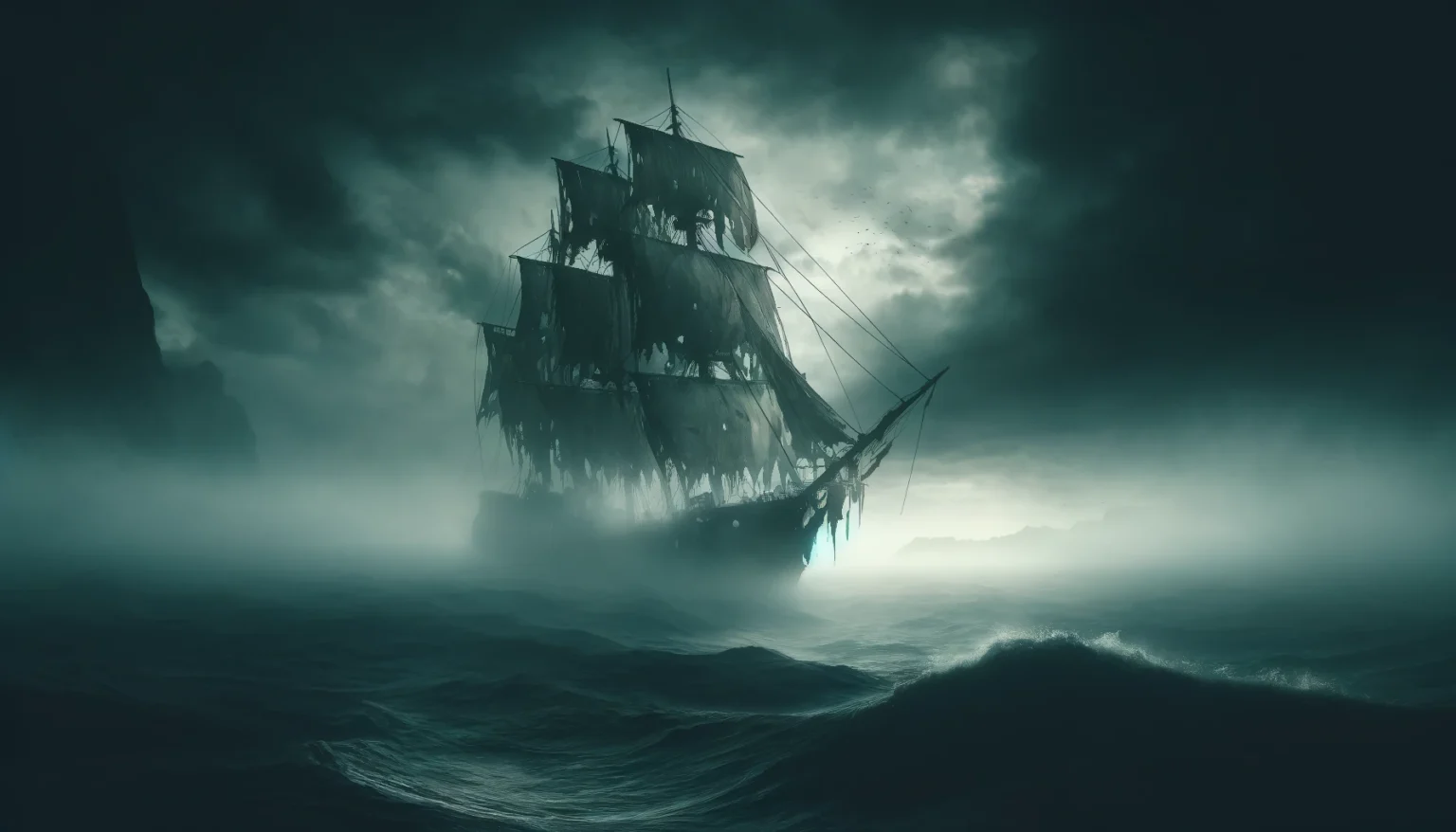This was an American merchant ship discovered drifting and abandoned in the Atlantic Ocean in 1872. How she and her crew disappeared and why is a mystery that then, and even to this very day, has inspired numerous theories and speculations from the mundane to the wildly imaginative. Here, we examine the history of Mary Celeste and the particulars of her ill-fated voyage, the numerous theories and possible reasons for the abandonment, and lastly, discuss the impact she has had on maritime legend.
The story of Mary Celeste sparks the imagination and speaks to the sea’s mystery and occasionally grim romance.
The Mary Celeste Background
Foundation and Superstructure
She was built as a 100-foot brigantine, which means two masts and first hit the water as the Amazon in 1861 when she was built at the Spencer’s Island shipyard in Nova Scotia, Canada. The ship was not an immediate success: it touched bottom two different times before being launched; it collided with another ship on its maiden voyage before being damaged by a storm and then later caught fire before sinking. Still, she sailed on, moving from one owner to the next like a hot potato.
The early troubles of the Amazon seemed almost prophetic, as though the ship was marked for an infamous future. Because her builders certainly had no idea that the ship would become one of the most fantastic maritime puzzles in history.
Renaming and Refurbishment
The Amazon was sold to American owners in 1868 and refitted in New York. Reparations and modifications were extensive beyond imagination, after which she was renamed the Mary Celeste. The ship could make long sea voyages now, considering the strengthening of her hull and the rigging improvements. Those were the changes on which her new owners had almost every hope that things were to prove the turning point in successful and trouble-free sailing.
The modification in the structure of the ship was based on that hope. No doubt, the saga of Mary Celeste would take a tottering plunge down into the annals so that she would be sealed in the realms of maritime legends. Little was done to change an accursed fate, enabling her to be endowed with an even more improved structure.
Stonehenge: Unraveling the Mysteries of a Prehistoric Monument
The Tragical Voyage
Setting Sail
On November 7, 1872, the Mary Celeste set sail from New York City bound for Genoa, Italy. Commanding her was Benjamin above Briggs, who was already presented to be an experienced master mariner known to be diligent and careful at his duties. The crew totaled eight experienced seamen, the captain included, who were carefully selected by the same. His wife, Sarah, and their daughter, Sophia, who was two years old, accompanied the captain.
The fare was 1,701 barrels of denatured alcohol, a hazardous substance that caused its handlers to exercise extreme caution. All signs, therefore, pointed to a well-prepared voyage by the very cautious Captain Briggs. Everything was like that, without a single hitch, during the beginning of the journey for both passengers and crew.
Making the Discovery
On December 5, 1872, the British brig Dei Gratia discovered the Mary Celeste, some 600 miles west of Portugal, adrift. The ship was seaworthy and under partial sail, showing no signs of distress—not the worst scenario, according to the crew of the Dei Gratia, but the men found when they boarded it was a completely understaffed vessel. Missing was the ship’s lifeboat, and the captain’s log suggested misadventure: its entries were last dated ten days before her crew found her and ended mid-sentence.
Personal belongings were left behind, and the cargo consisted of a great deal of alcohol, with very few barrels reported broken. Over the years, an utterly seaworthy ship and an absence of crew had provoked innumerable suppositions and theories.
Decoding the Voynich Manuscript: History Greatest Mystery
Theories and Speculations
Piracy
One of the first theories dated the Mary Celeste back to pirates. However, there were no marks of violence or signs of a struggle on the vessel, and valuable items like the crew’s personal effects and the ship’s cargo were left untouched. This presents evidence against piracy as an answer to the crew’s vanishing. Pirates, being greedy, would most likely have taken the valuable stuff, and signs would have suggested something of the sort had happened. The lack of them indicates the possibility that the crew disappeared for other reasons that were not violent.
Mutiny
Another theory is that there may have been a mutiny aboard the Mary Celeste. The crew may have revolted against Captain Briggs and left the ship. However, to this day, there is no evidence to establish this theory. Captain Briggs was a fair and able leader. There was no sign of a fight or forced entry on the Mary Celeste. The fact that there is no recorded discontent among the crew further makes this theory weak.
The presence of Briggs’s family on board also makes the presence of a mutiny that much more far-fetched, as violence against or the disappearance of innocent civilians would have also been required.
Alcohol Vapor
A much more likely theory revolves around the ship’s cargo—denatured alcohol. An experiment was conducted, and it was supposed that the fumes of leaking barrels might have set in the lower hold, which would have created an explosion hazard. In a panic, the crew might have escaped in the lifeboat, wanting to stay close to the ship until the danger had cleared.
But neither any trace of an alcohol explosion nor of any actual leakage had been detected, and the lifeboat and the crew were missing afterward. Now, since this theory does account for why the crew may have left the ship in a hurry, it does not account for their fate or the condition in which the boat had been found.
Natural Calamities
It is possible, according to some researchers, that some sudden natural disasters, such as a waterspout or an undersea earthquake, caused the crew to abandon the ship. Such events would have caused panic and left the crew with the impression that the boat was sinking. The fact that the Mary Celeste was given back to the water in a relatively seaworthy condition makes this less likely.
Natural disasters of the kind referred would usually cause more damage to a vessel, and there was no record of such an event in the log. But the fear that such events would take place may have sent a too-cautious crew into a hasty abandonment.
Paranormal Explanations
In addition, it has also rendered the Mary Celeste a subject of several paranormal versions over time. Some of them show that the crew was abducted by UFOs or had some other supernatural experiences. These theories are fascinating, but they do not allow for any scientific evidence and, as a kind of rule, are taken as the only possible imaginative explanations of the mystery.
These theories take part in eternally human interest in the unknown and a wish to find outstanding answers to puzzling questions. All these theories could be very entertaining, but they are not and cannot be confirmed by any credible evidence, so they belong to the fiction world.
Mysteries of the Bermuda Triangle: Unraveling the Enigma
The Aftermath
Salvage and Legal Proceedings
The ship was adrift, spotted without a soul in sight on her, 1,000 miles east of Gibraltar. The crew of the Dei Gratia took the Mary Celeste to Gibraltar. Still, the salvage court found no evidence of foul play, which gave less than a fraction of the value the find was worth, seeing that the court had suspicion of possible wrongdoing. The ship was sold and went on trading under new ownership names.
In 1885, she wrecked off Port-au-Prince, Haiti, in an insurance fraud gone awry. All these legal proceedings, along with the fate of Mary Celeste, only attest to her story and hint at the condition of maritime law and the dangerous risks of mercantile sea trade.
Cultural Influence
The mystery of Mary Celeste has intrigued the imagination of the public and has been the inspiration for many books, articles, and also works of fiction. This mystery has assumed a fixed part in the lore and is often called one of the most incredible sea mysteries. The story has captured and intrigued the public with the appeal of unsolved maritime mysteries. In its aftermath, the mystery has always fueled the attention of countless media, from novels and movies to documentaries and songs, each adding a thread to the mystique of the ship.
The story of the Mary Celeste mystery has become the archetypal type of story that highlights the mysterious and often unpredictable nature of life at sea.
Exploring the Sovereignty of the Black Sea!
Modern Investigations and Theories
Science Analysis
Modern scientific testing and new techniques have been applied to unravel the mystery of Mary Celeste. Computer simulations checked the stability of the ship and ran scenarios that would have had to take place to account for the crew’s disappearances. These studies provide fruitful insight but no solution to the mystery. With the augmentation of technology and advancements in analytic techniques, situations and factors that could have probably led to the abandonment of the ship will keep being pointed out, bringing new perspectives and postulations to mind.
The Evidence Revisited
Since then, this mystery has sparked the interest of historians and maritime experts, who have accumulated and replied to the evidence base—closely reviewing the ship’s log, cargo manifest, and crew personal records allowed for new theory interpretations. Some researchers embrace the idea that debating several potential causes, rather than a single cause, might explain the desertion of the vessel.
Modern investigators hope that a fuller understanding of the events that led up to the Mary Celeste mystery may be pulled from piecing together historical records, personal accounts, and forensic evidence. All that one can say is that such continued research depicts an interest never satiated and a quest for conclusive answers.
Conclusion
Mary Celeste — one of the most enduring enigmas in maritime history. What happened to the crew and why they disappeared is cloaked in obscurity. The Mary Celeste case is probably an enigma that will never be fully unveiled. New technologies and research approaches bring hope to pin down some investigations in the case of Mary Celeste one day. Until that time, it remains a story bearing testimony of a boundless and, too many times, uncontrollable sea carrying forth its will to inform humanity.
FAQs
What is the Mary Celeste?
The Mary Celeste was an American merchant ship discovered adrift and deserted in the Atlantic Ocean in 1872. The fate of her crew remains a mystery.
Who was the captain of the Mary Celeste?
Benjamin Briggs, an experienced and respected mariner, was the captain of the Mary Celeste. He was on board with his wife and daughter.
What cargo was the Mary Celeste carrying?
The Mary Celeste carried 1,701 barrels of denatured alcohol, which was highly flammable and required careful handling.
What are some theories about the disappearance of the crew?
Theories about the disappearance include piracy, mutiny, alcohol fumes, natural disasters, and even paranormal explanations. However, none have been conclusively proven.
Has the mystery of the Mary Celeste been solved?
No, the mystery of the Mary Celeste has never been definitively solved, and it remains one of the greatest mysteries in maritime history.

